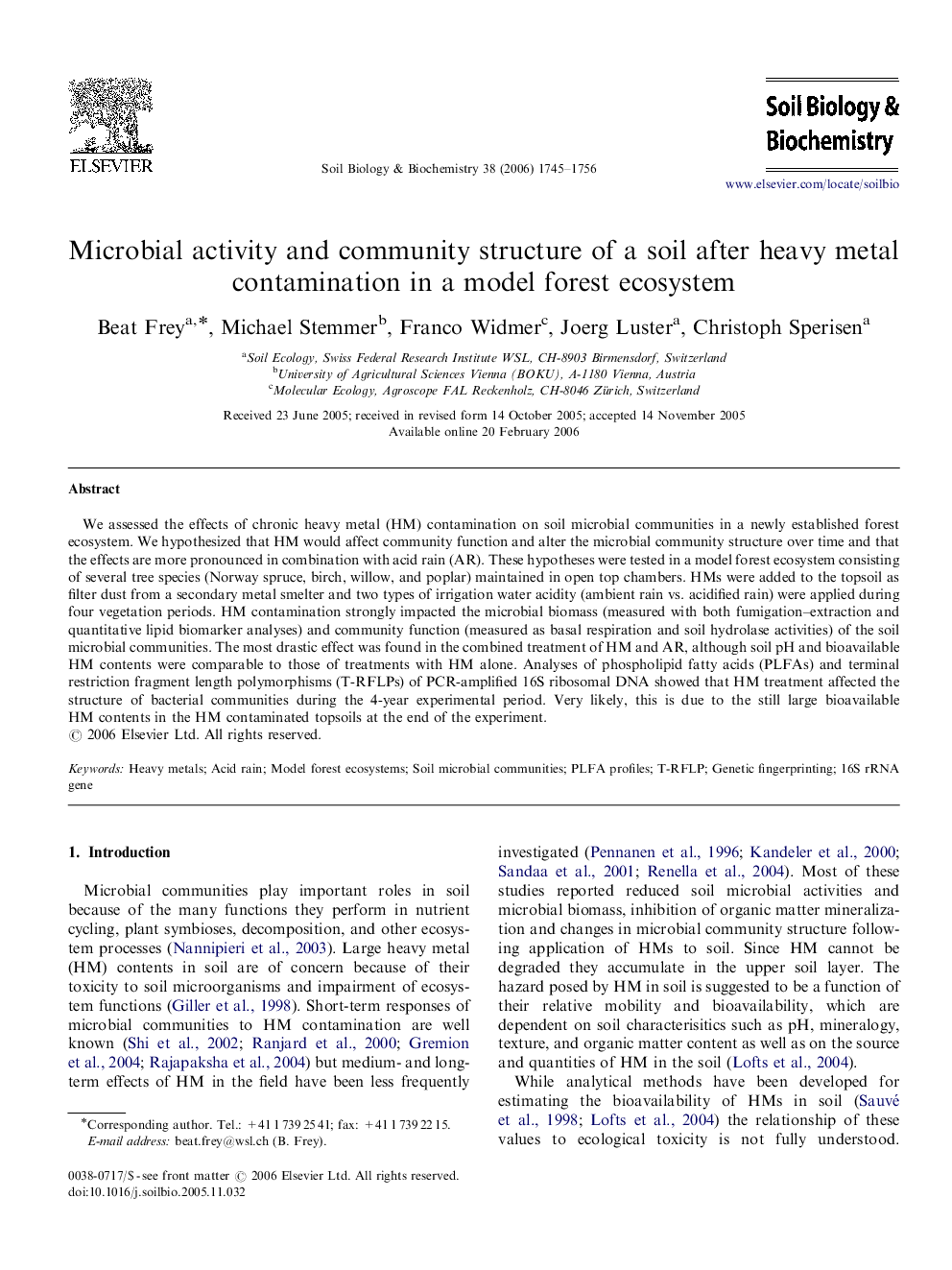| Article ID | Journal | Published Year | Pages | File Type |
|---|---|---|---|---|
| 2026578 | Soil Biology and Biochemistry | 2006 | 12 Pages |
We assessed the effects of chronic heavy metal (HM) contamination on soil microbial communities in a newly established forest ecosystem. We hypothesized that HM would affect community function and alter the microbial community structure over time and that the effects are more pronounced in combination with acid rain (AR). These hypotheses were tested in a model forest ecosystem consisting of several tree species (Norway spruce, birch, willow, and poplar) maintained in open top chambers. HMs were added to the topsoil as filter dust from a secondary metal smelter and two types of irrigation water acidity (ambient rain vs. acidified rain) were applied during four vegetation periods. HM contamination strongly impacted the microbial biomass (measured with both fumigation–extraction and quantitative lipid biomarker analyses) and community function (measured as basal respiration and soil hydrolase activities) of the soil microbial communities. The most drastic effect was found in the combined treatment of HM and AR, although soil pH and bioavailable HM contents were comparable to those of treatments with HM alone. Analyses of phospholipid fatty acids (PLFAs) and terminal restriction fragment length polymorphisms (T-RFLPs) of PCR-amplified 16S ribosomal DNA showed that HM treatment affected the structure of bacterial communities during the 4-year experimental period. Very likely, this is due to the still large bioavailable HM contents in the HM contaminated topsoils at the end of the experiment.
